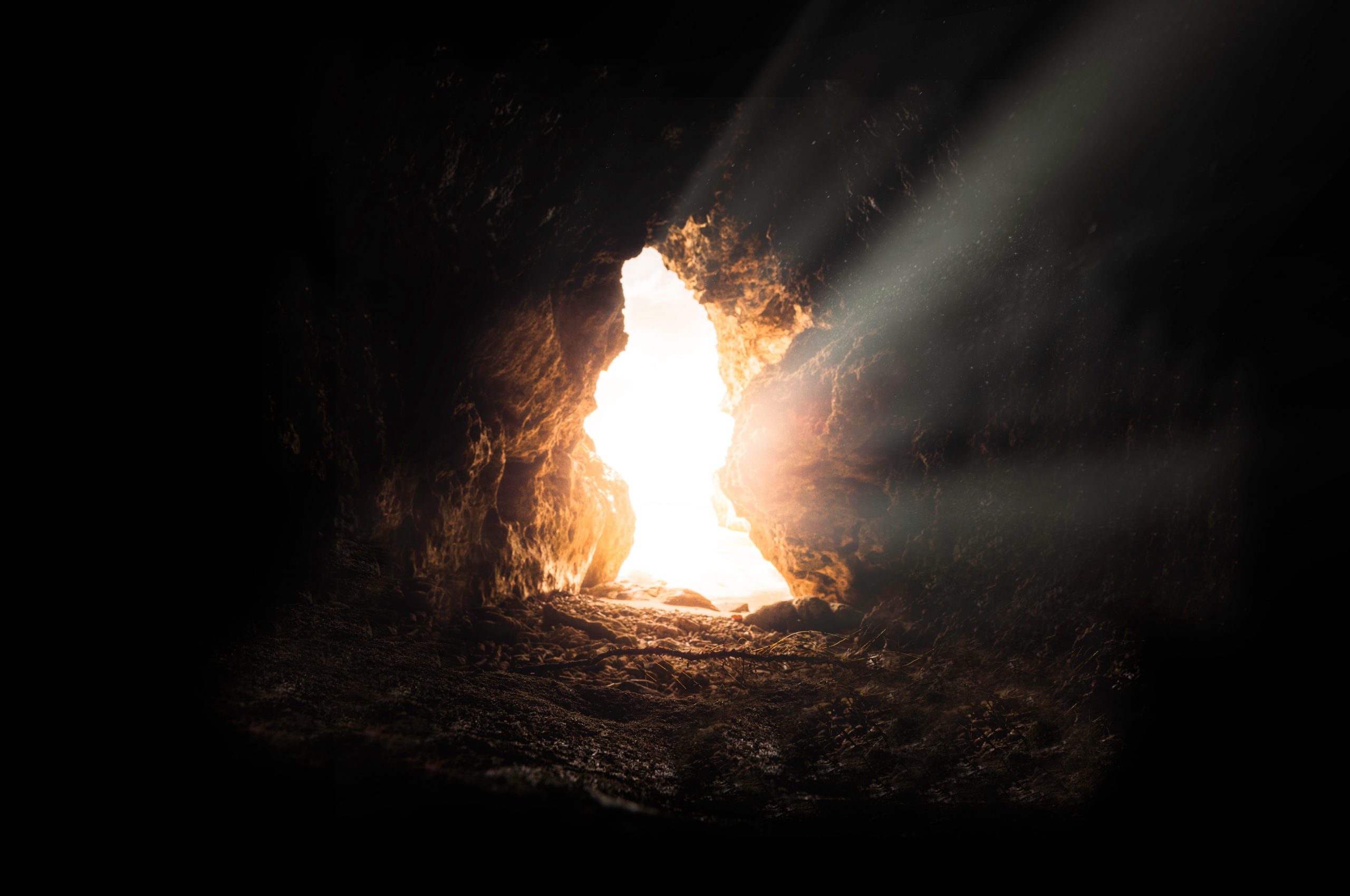28 March 2018
Can you imagine what it might have been like to see Jesus emerge from the tomb?
As a matter of fact, the Gospel writers do not record that moment!
Presumably, it was very early on the Sunday morning, before dawn. The women had not yet arrived with their spices to anoint the corpse. The guard had been posted on the Saturday between Jesus’ crucifixion and the resurrection. But it appears the first they knew of things was an earthquake and the rolling back (by an angel) of the stone that had shut up the tomb’s entrance. They later said they’d been sleeping through the night.
We don’t know how Jesus emerged. Did he pass through the stone walls with a transformed body? Was the moment quiet or full of shining light? We are not told. It seems no human witnessed the actual moment.
But by the power of God, Jesus had been raised, bodily, transformed forever. And so Jesus transformed history forever, providing us, who believe, with the hope of our resurrection, at the end of the age.
In 1874, pastor and prolific hymn-writer, Robert Lowry composed a hymn which imagines the scene. It’s become my favourite for Easter Day, or Resurrection Sunday as others call it. It’s known by its first line: “Low in the grave he lay.” It became his most well known hymn.
One hymnologist, K.W. Osbeck, records that Lowry composed the song in 1874, while sitting at his little pump organ at home, after reflecting on Luke 24:5-8. This records the women’s experience of the empty tomb. They had approached expecting to find Jesus still lying “low in the grave”, as the first verse starts, “waiting the coming day”.
But the angels tell them, “He is not here. He has risen.” So the hymn chorus swells…
“Up from the grave he arose, / With a mighty triumph o’er his foes; / He arose a victor from the dark domain, / And he lives for ever with his saints to reign! / He arose! He arose! / Hallelujah! Christ arose!”
Lowry’s poetry in v2 suggests he must also have noticed the frustration of the soldiers in Matthew 27:62-28:4. “Vainly they watch his bed… Vainly they seal the dead.”
Lowry had been a professor of literature as well as a Baptist pastor. And he clearly had a brilliant literary and musical imagination. The centrepiece of the song is the textual and musical contrast between the verses and chorus. One writer explains it well, “The dirge-like stanzas in block chords with a melody that plods in a step-wise fashion give way to a rhythmic refrain that surges up like a trumpet blast.”
The third verse finishes with the great gospel truth in the face of the sober reality we all face at the end of life on earth. Death has not defeated Jesus… No, he has defeated death!
Death cannot keep his prey – Jesus, my Saviour!
He tore the bars away – Jesus, my Lord!
Up from the grave he arose!
Sandy Grant
Senior Minister





